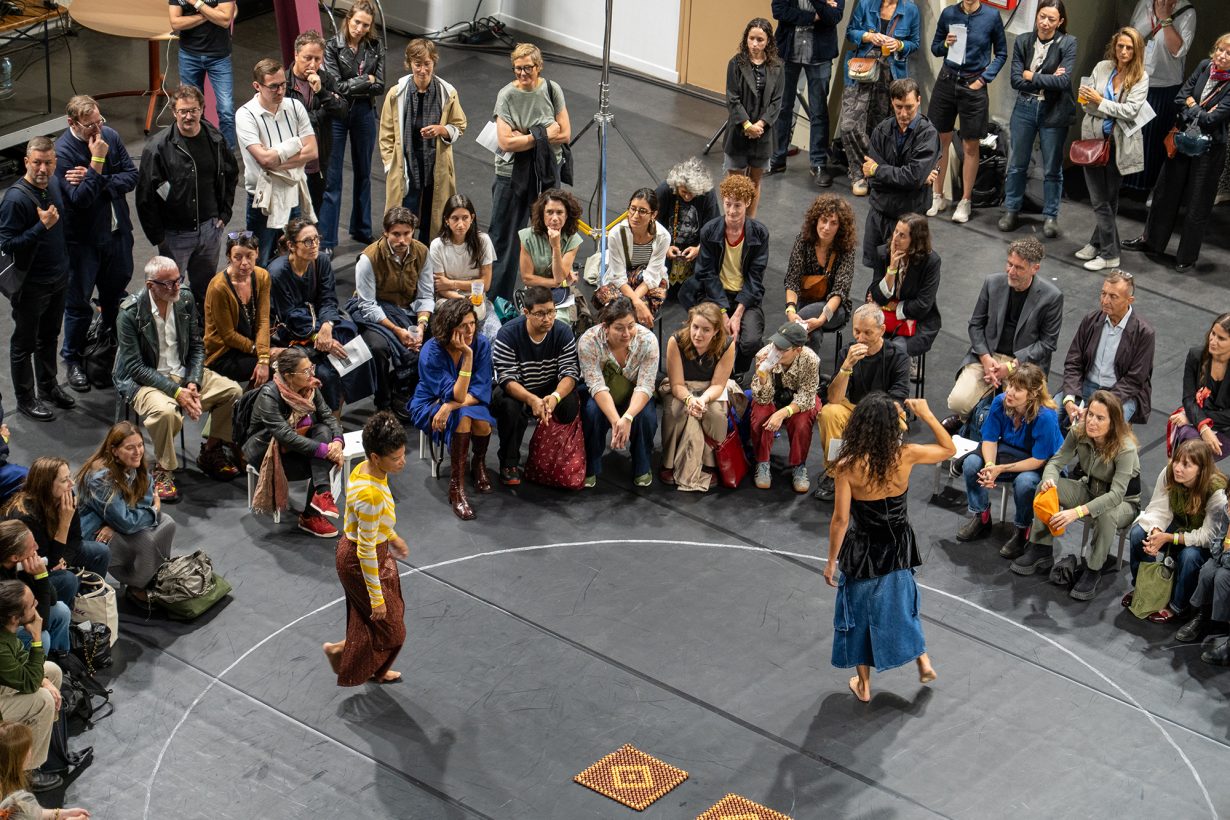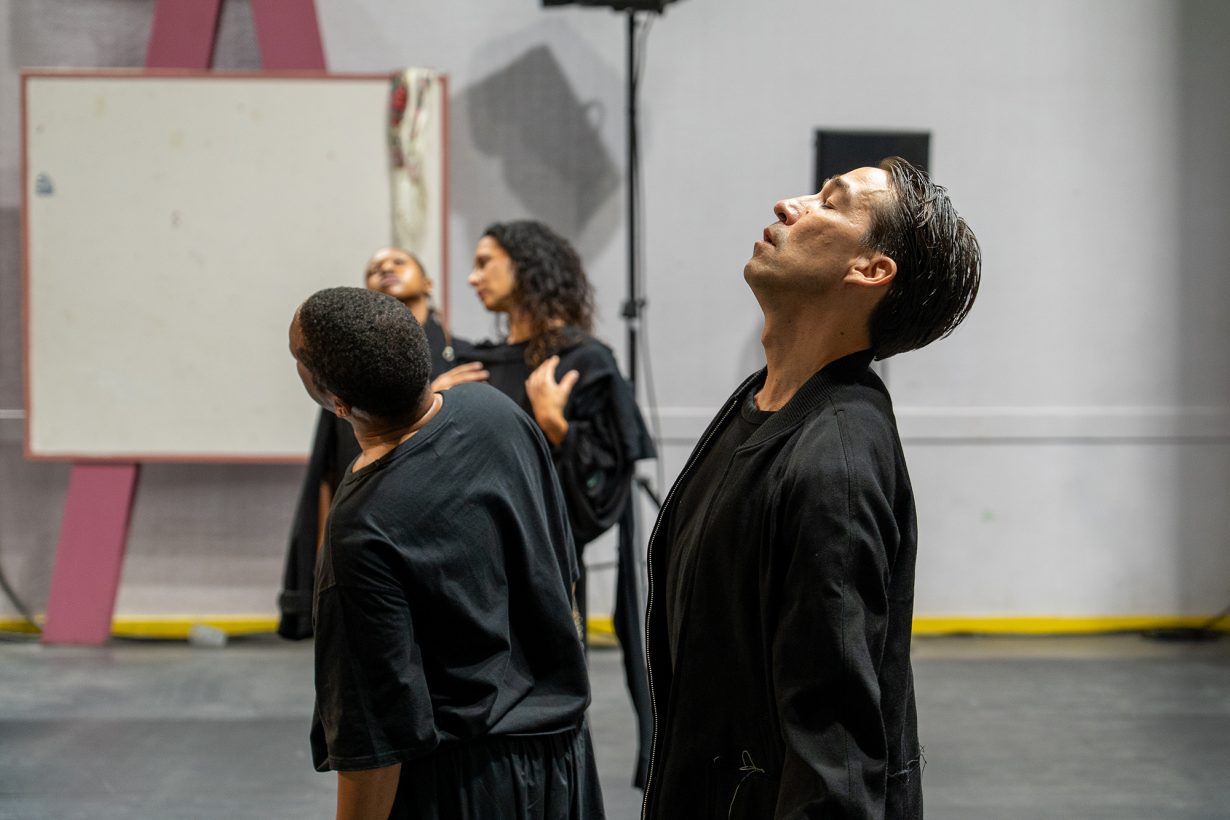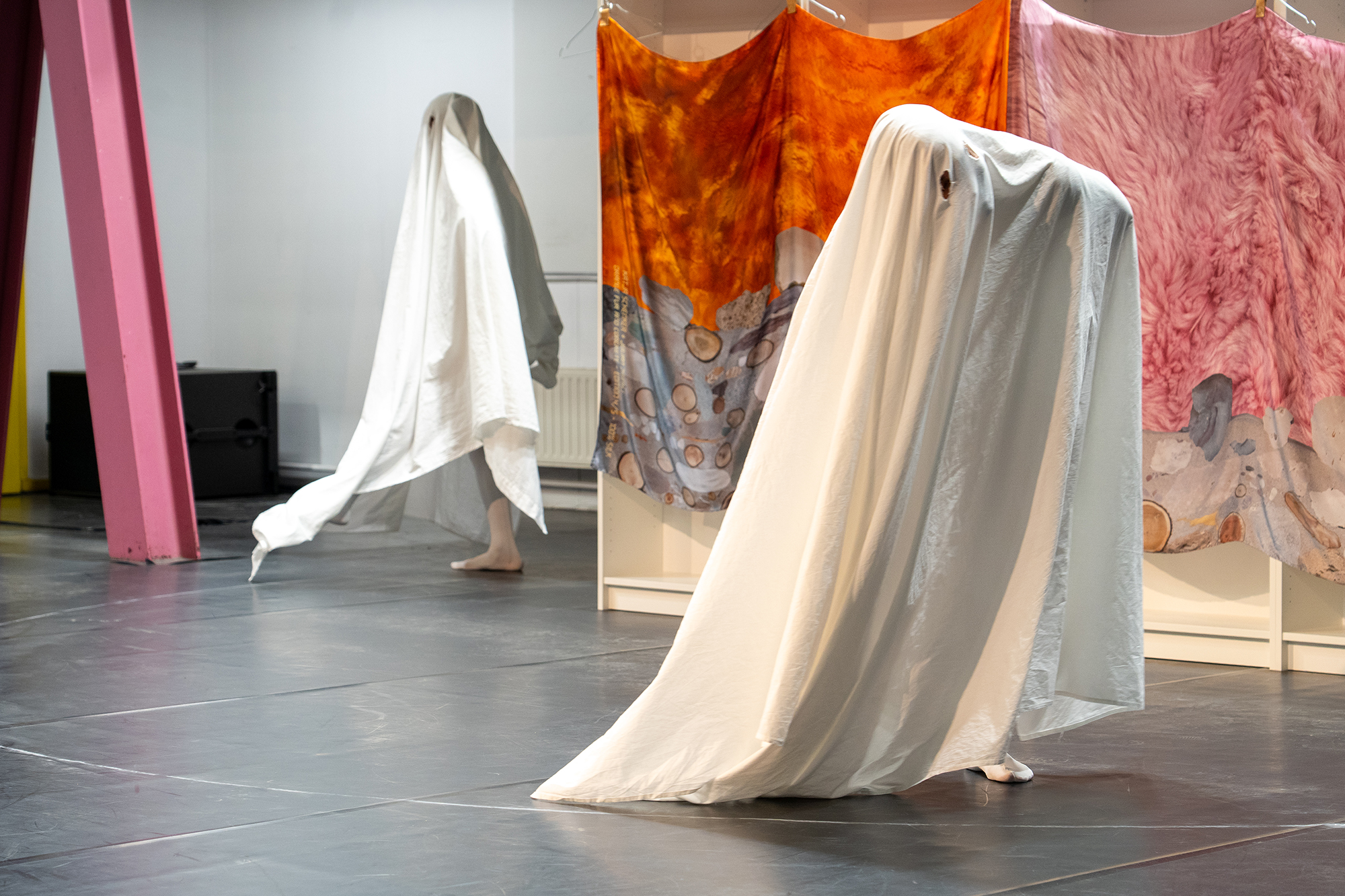In the American choreographer’s work, proximity and informality are key
Trajal Harrell’s work is known for bringing contrasting dance traditions into dialogue in both theatrical and visual art contexts. The American choreographer’s signature 2009 piece, Twenty Looks or Paris is Burning at the Judson Church, imagined a collaboration between the Harlem voguers and the postmodern choreographers of 1960s New York, and of late he’s extended his cross-genre explorations to include butoh, the Japanese dance-theatre form characterised by themes of death, decay and regeneration. But at this year’s Holland Festival Harrell revealed that he is closing this chapter of his work, and to mark the transition he premiered the collection at Paris’s multidisciplinary Festival d’Automne. Comprising four vignettes, none longer than 30 minutes, it aimed to evoke the experimental energy of butoh founder Tatsumi Hijikata’s Asubesutokan (Asbestos Hall), a studio in 1960s Tokyo where artists ate, slept, debated and created. Presented in the atrium of Artagon Pantin – a production space dedicated to supporting early-career artists – the evening had a DIY feel, emphasising the vitality of process over polished performance.
For the night’s second work, Arena – performed by two female dancers, later repeated by a male duo – a chalk circle was drawn matter-of-factly on the floor, stools arranged around it for audience members. Harrell sat among them, bespectacled and earnestly scribbling in a notebook (writing feedback, or ideas for future explorations?) as his performers moved around the circumference, throwing salutelike gestures to the spectators that ranged from cheeky to confrontational. Against an eclectic score of haphazardly assembled tracks, they undressed and switched fashionable outfits – frequent costume changes between luxury-brand items are a Harrell hallmark – strutted with exaggerated, leg-flicking walks, and contorted bodies and expressions into awkward, grotesque configurations. Lips protruded, brows raised, eyes rolled back to create raw displays of emotion evoking tragic theatrical masks, or characters from a manga cartoon.

In contrast, Five Friends in Five Acts saw Harrell and longtime collaborator Perle Palombe switch between bizarre scenes – irreverently running, between each, to grab bites of salad and down champagne. The first part, in which they alternated laying colourful ribbons in a latticed pattern on the floor in some kind of game, was the most charming. Their intense concentration was quietly amusing, especially when they moved to dropping plates on top of the ribbons while trying not to smash them, childlike horror and disappointment flooding Harrell’s face when his shattered.
Arena was supposedly inspired by the dealer and client in Bernard-Marie Koltès’s 1985 play In the Solitude of Cottonfields, and by Five Friends a recent touring exhibition featuring work by Robert Rauschenberg, Cy Twombly, Jasper Johns, Merce Cunningham and John Cage. Yet it was the exaggerated emotionality embodied by Harrell and his dancers across the collection that was more visceral and affecting than any intellectual allusions. Witnessing such intense states can make a viewer feel less isolated in their own emotional extremes. That Harrell can suddenly switch from this into confident catwalklike struts speaks to the multiplicity of the human experience, as well as the strength many of us summon to control, and sometimes conceal, our inner worlds.

Proximity and informality are key. While Harrell has presented largescale works on major European stages – from London’s Sadler’s Wells to Berliner Festspiele – he began in intimate, gallery-style contexts like this one, where his work thrives. The ‘scratch’ vibe – short, digestible pieces, with viewers free to come and go, glasses of wine in hand – keeps the work approachable despite its three-hour duration. It also reflects Harrell’s playfulness, his refusal to take himself too seriously. In the collection, bizarre, impulse-driven scenarios coexist without the pressure of dramaturgical logic: in A Ghost Ballet, for example, five dancers shift from waggling clothes-hangers at the audience like market hawkers to darting about in black-and-white sheets like Scooby-Doo ghouls. In a traditional theatre setting, I might have found the lack of narrative or thematic throughline frustrating. Here, though, I found myself chuckling along with the childlike playfulness and experimental energy. It’s refreshing in a time when economic pressures often stifle the risks on which art depends.
the collection at Artagon Pantin, 4–6 September
From the October 2025 issue of ArtReview – get your copy.
Read next: “I always considered myself to be a choreographer who was a bad dancer,” Trajal Harrell tells Evan Moffitt
